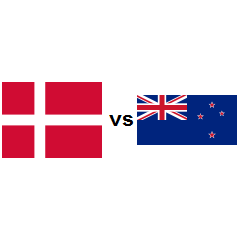I'm not sure I read Navy Today like that. From my perspective the budget was a steady as we go budget consistent with implementation of DWP19. In terms of defence there a still a significant number of real estate issues outstanding (from the state of defence housing vs the government's health homes policy, the replacement of some long term building assets (i.e. the main accommodation blocks at DNB (assuming DNB stays) not to mention considerations around a drydock etc.
Realistically the Governments in a bit of a position with regards to the Navy. With most of the fleet due for replacement next decade, there is only so much wriggle room in deferring the acquisition of new ships, and a reduction in fleet size isn't an option, given some of the background reasons for Project Protector (i.e. the navy had become to small). For me decisions on the future fleet would be (given the snail pace of defence acquisitions) need to be made by about 2025 /2027 (at the lastest), with the first ships online 2031. Assuming all the ministers are talking to each otherand are on the same page in regards to the changing strategic situation I suspect we'll see a more of a more capable OPV replacement (i.e. 4 would allow for one permanently deployed into the South Pacific, mil spec for design, larger flight deck - so longer overall length, 57mm as possible examples). The navy will always require 1 IPV for training in the gulf - anyone want a night in a life raft. Changes in MCM / Hydrographic technology are likely to change the requirements to replace Manawanui with a like for like. As to the frigates and Canterbury mmm....
Yes put it out there to see if others interpret it same way... so thanks Lucasnz, feeling less apprehensive now! At least the Defence vote didn't get a 'hard' cut.... stagnant funding is of course a 'soft' cut as inflation quickly eats into Opex. I'm hoping it is just my pessimistic take on the subject... hard not to be when discussing the NZDF
Yes the RNZN can't really get any smaller although someone (RNZN?, NZDF? Govt?) always sounds damn keen on dropping the IPV yet I agree with you, they are needed.... I'd suggest both remaining ones are retained. What Navy doesn't operate smaller vessels... and how would not doing so work for a Navy as small as the RNZN? The IPV are perfectly fit for their primary purpose (Inshore patrol) as well as cheap & importantly quick to put to sea for training; SAR; presence (mainly PR)... all relatively short duration 'bread-and-butter' taskings for Navy fleets worldwide. Whilst RNZN may have a bunch of simulators, you cannot sim train everyone for every role and nor can every large vessel offer the range of at sea training required... plus the latter have distinct Op tasks so not nearly so available for training. If they do get rid of the IPV the RNZN will quickly find to their cost in years to come that they need the flexibility & lower Opex a vessel in the IPV class offers for the roles it performs.
As regards to the changing Defence outlook, there is now clear evidence the Govt has 'clicked' that the security outlook is worsening and with both Aus & USA Govt level meetings (recent or due) that suggests what the 'pillow-talk' is at least partly about. Given no NZ Govt in the last 40 odd years has mentioned anything other than benign security environment then recent comments from Mahuta in the MSM tell us that the true picture is now clearly understood. The next Defence assessment will be eagerly anticipated and is bound to paint a picture of that worsening security outlook... and that will then back this & future Govts into a corner on Defence spending. Mind you NZ started backing itself into that corner after the 1991 budget!



